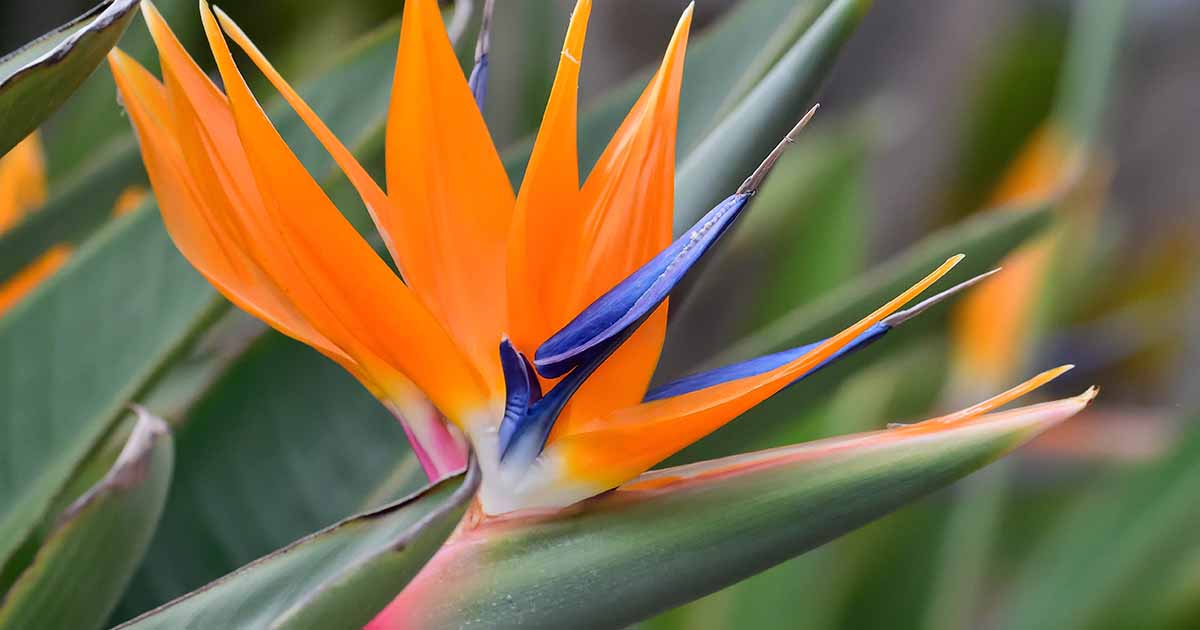
If you’re growing bird of paradise plants (Strelitzia spp.) there may come a time when you want to move it to a different location in your landscape.
Perhaps you need your plants to make the switch from in-ground to in a container, or vice versa.
Transplanting is more than just digging up a plant and plopping it back down into a different hole. The process requires timing, technique, and TLC to be successful. Not to mention discernment in deciding whether or not your plant even needs to be transplanted to begin with.
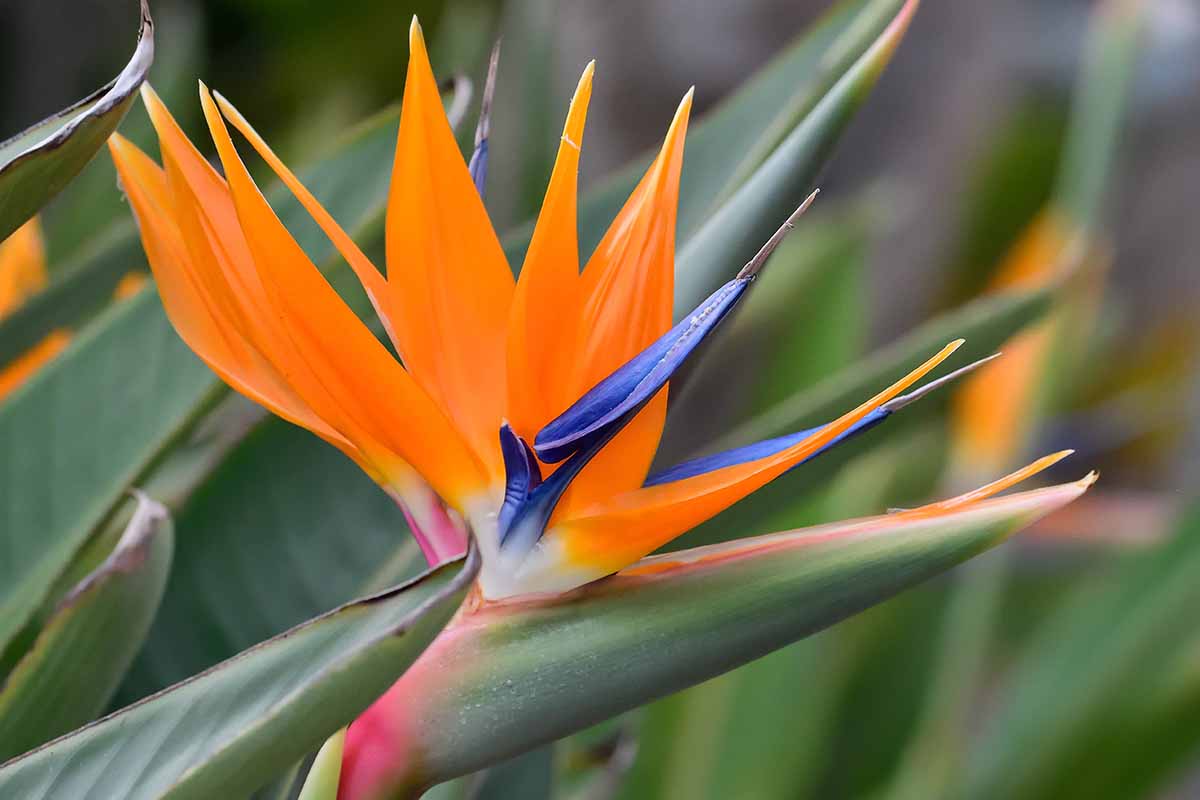
We link to vendors to help you find relevant products. If you buy from one of our links, we may earn a commission.
In our guide to growing bird of paradise, we discuss how to cultivate these tropical beauties in your landscape. In this article, we’ll talk about when and how to move your bird of paradise plants.
Here’s what we’ll be talking about:
Transplanting Bird of Paradise Plants
Reasons for Transplanting
First of all, why would you want to transplant your bird of paradise? There are a number of reasons why you may wish to move your plants.
Perhaps you bought a bird of paradise from a local nursery or have one shipped to you from an online vendor, transplanting is what you’ll do to put it in the ground or into a new container.
Or you’re moving house, and need to pop your in-ground specimen into a pot to take it with you.
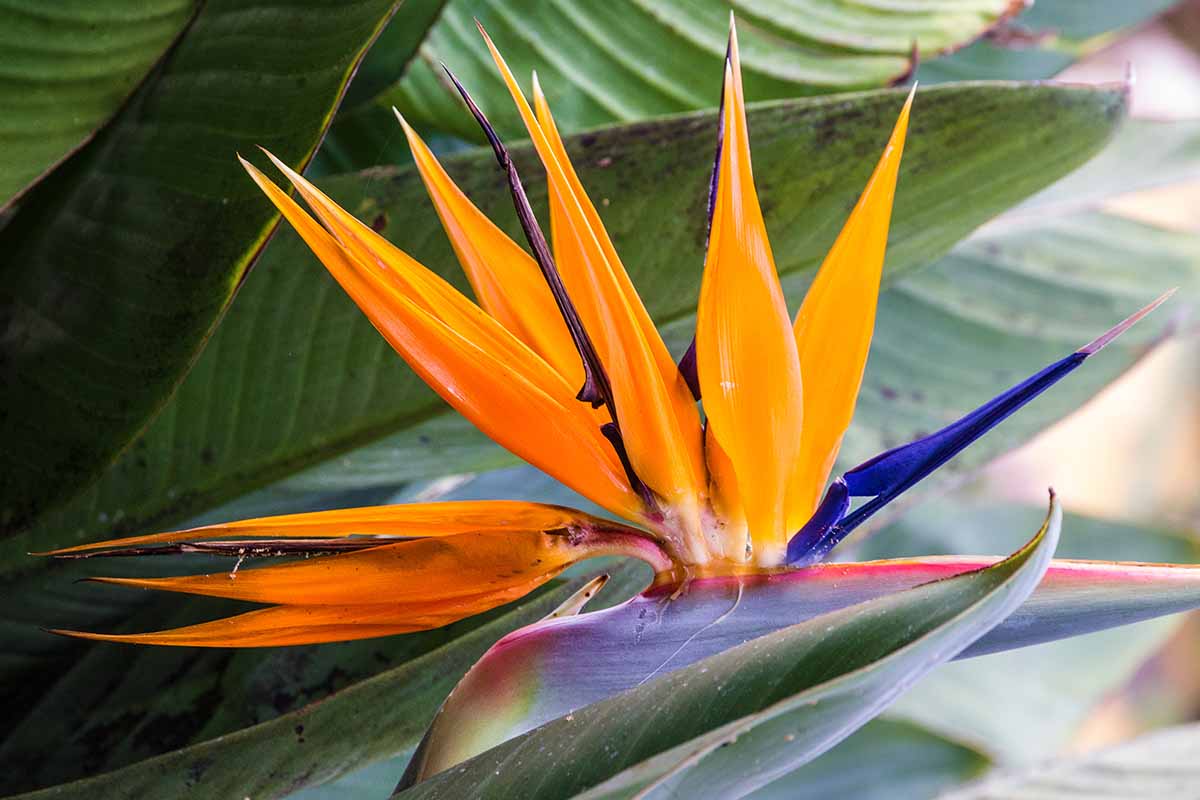
When established Strelitzia plants become overcrowded and don’t have enough space to grow, their growth may be stunted and they may exhibit signs of stress like leaves turning yellow.
But by transplanting them into sites with more elbow room, they’re more likely to reach their expected mature size.
Sometimes, plants just end up in a suboptimal spot that doesn’t foster healthy growth. Maybe the local microclimate is too hot or too cold, or there’s not enough sunlight. Or perhaps the soil doesn’t drain well, or it lacks the nutrients to fuel healthy growth.
If you catch this early enough and move your specimen to a better location, it should start to grow that much better.
You may also wish to move your plants around purely for aesthetic reasons – botanical gardens and other high-end landscapes do this sort of thing all the time.
When to Transplant Bird of Paradise
So you want your plants moved, but before you start digging you’ll need to schedule it at the proper time.
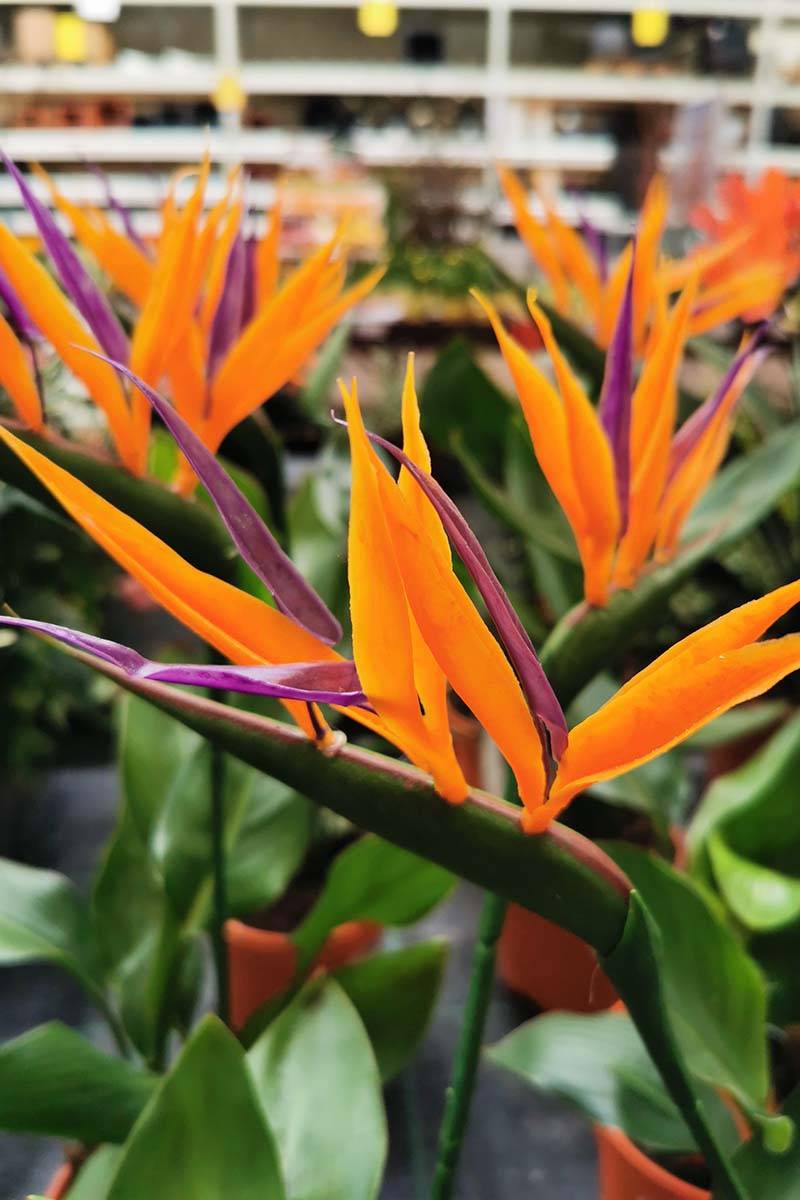
These plants do best when you transplant them in late spring or summer.
As Strelitzia species are sensitive to root disturbances, you want to make the move during the bright, warm conditions of the growing season, which gives them ample opportunity to become reestablished before winter rolls around.
Prepping the New Site
Whether your transplant is going outdoors in the ground in a new location or into a container, you’ll need to prepare ahead of time.
Outdoor specimens will need to be in USDA Zones 9 to 12 to survive year-round, unless you are going to overwinter your Strelitzia indoors.

For birds of paradise grown indoors, daytime temperatures of 70 to 75°F and nighttime temperatures of 50 to 55°F are best. Set up humidifiers, trays of water, and group plants together to boost the ambient humidity up to 60 percent if possible, and you’re golden.
In-ground specimens will need organically-rich, well-draining soil with a loamy texture and a pH of 5.5 to 7.5.
A soil texture test will tell you if the soil needs any amendments to help with drainage or the addition of organic matter. Loam or sandy loam is best, as it strikes a decent balance between draining excess water and retaining nutrients.
Organic matter can be increased by working a source of humus into the soil, such as compost or well-rotted manure. You can do this by creating a layer on top of the soil a couple inches thick, then working it in with a hoe or tiller.
As for the pH, some pH strips will let you know if your soil pH is outside of the recommended range.
Higher pH levels can be made more acidic with applications of elemental sulfur or aluminum sulfate while low pH levels can be sweetened with limestone, baking soda, or even eggshells.
A full sun to partial shade location is best, so plan your planting sites accordingly – don’t put them under a shade tree, for example. Indoor plants should go near bright, sunny windows.
If you are digging up your plant and putting it in a container, you’ll need to select a vessel that allows at least an inch or two of space between the edges of the root mass and the sides of the pot. You must make sure that the container has one or more drainage holes in the bottom.
Potted plants will require a soilless medium that retains moisture, yet allows the excess water to drain away. A half and half mix of peat and perlite works well, but plenty of commercial products get the job done.
The ideal pot for a bird of paradise is durable, has drainage holes at the bottom, and is slightly larger than the root system of your transplant. If the diameter of your container isn’t at least an inch or two wider than the roots, it’s too snug of a fit.
Digging Up and Replanting
If you haven’t already prepped the new planting sites, make sure you do that before you start digging.
You’ll also want to ready your choice of digging tool. For extra credit, sterilizing it with isopropyl alcohol can keep the spread of pathogens to a minimum.

Within the 24 hours prior to transplanting, water your to-be-transplanted specimens deeply. This loosens up the soil making it easier to dig, and ensures the roots are well-hydrated ahead of their move.
Use a shovel or spade to dig a circle around your transplants, as deep as it takes to get under the root system. This’ll probably be about a foot deep and wide, though this will depend entirely on the size of the plant.
A sharpened spade comes in handy here for severing inaccessible roots from the surrounding soil.
Ideally, you should be able to squat down, get your fingers or a shovel under the root ball, and haul the plant outta there, assuming you’re not moving one of the larger tree-like species.
If they’re too big for you to move by yourself, then those are best moved by the professionals with their big ol’ digging machines and liability insurances.
Containerized plantings may not need much digging. Simply breaking up the media with a soil knife or your hands may be all that’s required to remove it from its container.
Once the plant is removed from the ground or its container, you can divide your bird of paradise if necessary before replanting.
Now, it’s time to dig new holes, or prepare your containers if you’re potting up. Dig as deep as you need so that the size of the hole is deep enough to accommodate the entire root system, and an inch or two wider.
Mix some compost or well-rotted manure into the soil you remove from the hole if you didn’t amend it ahead of time.
Then, carefully move your transplants into their new homes. Backfill the holes and deeply water your specimens. If you have extra dug-out soil, you can use it to fill in the parts of your garden where your birds of paradise used to be.
Aftercare Tips
After transplanting, you’ll want to keep the soil surrounding their roots evenly moist for at least three months, after which point your plants should become established and start growing new roots and shoot tissue.
Once they are established you can hold off on watering until the top three inches of soil dry out.
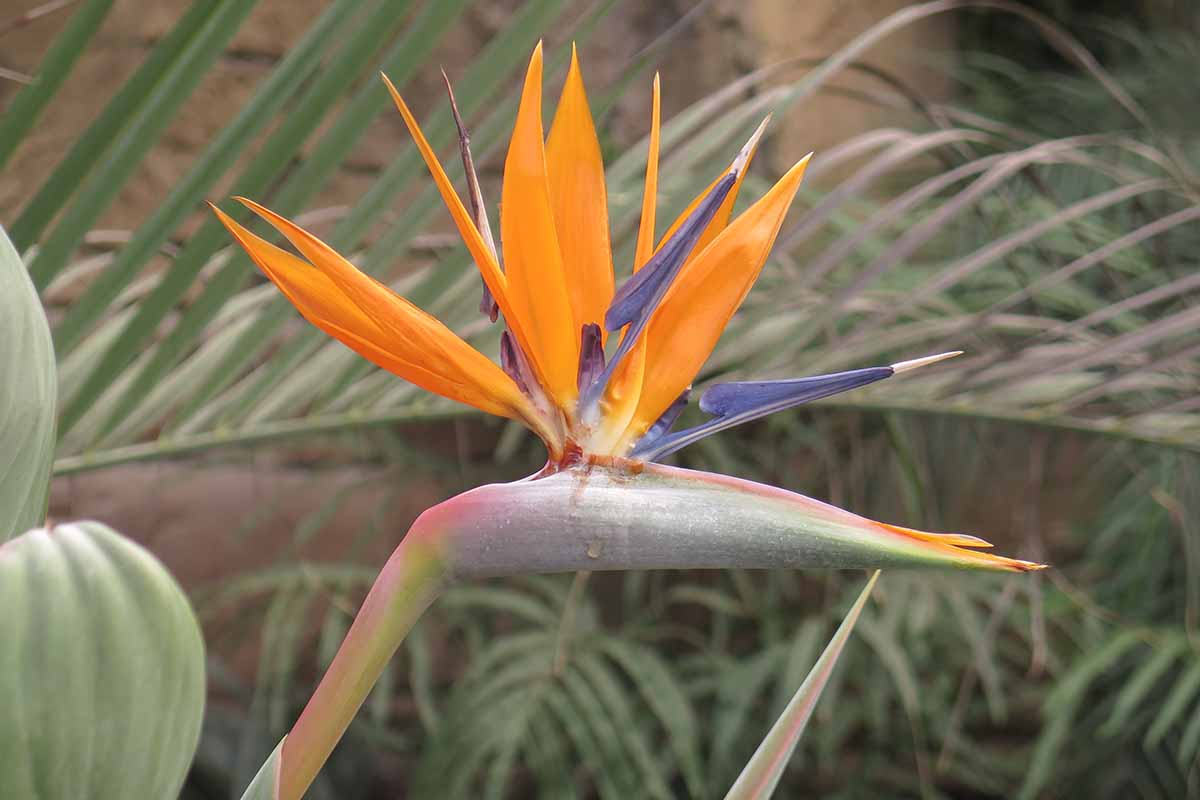
If you transplanted in summer rather than spring, then keep an eye that your transplants don’t dry out – this can happen quickly in the heat of summer.
Once the plants are established you can fertilize in-ground specimens with organic matter such as compost or well-rotted manure every three months or so.
Container-grown plants will need more frequent fertilizing, but be sure to wait until they are properly established and showing signs of new growth before feeding.
Learn more about how to fertilize Strelitzia in our guide.
Can’t Transplant? Not Anymore
Unless you’re growing a behemoth tree-like species, transplanting your Strelitzia plants is a pretty simple undertaking.
Whether you’re digging it up to bring indoors for the winter or moving house, you can quite easily dig up your specimens and replant them in a different location – or in a container.
Are you growing Strelitzia plants? Have you ever needed to move them? Let us know in the comments section below!
And for more information about growing birds of paradise in your landscape, have a read of these guides next:





